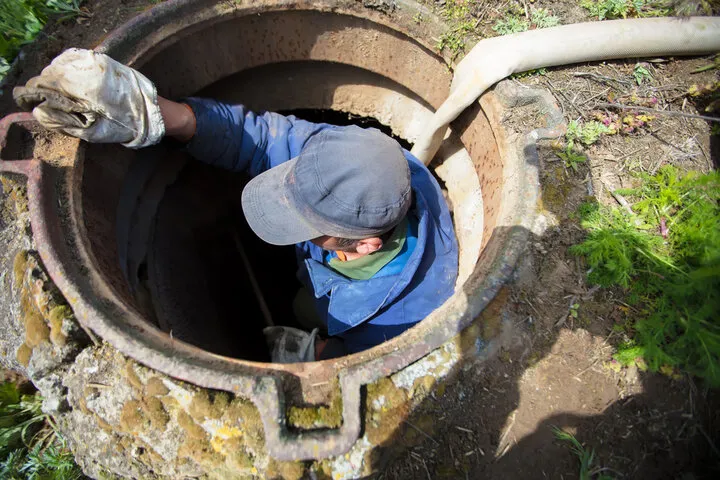Sewer Cleanout in Yolo, CA
Sewer cleanout services protect your home or business from backups, costly repairs, and the health hazards that come with raw sewage. In Yolo, CA, unique local factors - older municipal infrastructure in towns like Davis and Woodland, expansive tree roots along waterways, seasonal irrigation and agricultural runoff, and heavy restaurant and campus activity - make routine sewer access and reliable cleanout service especially important. Whether you’re dealing with a recurring slow drain, a sudden backup, or planning preventive maintenance, understanding what a proper sewer cleanout entails will help you choose the right solution for your property. Our technicians follow COVID-19 safety precautions and guidelines while working in residential and commercial settings throughout Yolo County.
Signs you need a sewer cleanout
Recognizing early warning signs prevents bigger problems. Common indicators include:
- Multiple drains backing up at once (toilets, tubs, floor drains)
- Gurgling or bubbling noises from drains after flushing
- Sewage odors in the yard, basement, or near cleanout access points
- Unexplained wet spots or sinkholes in the yard above the sewer line
- Slow drains that get worse after rainfall or irrigation
- Frequent clogs despite plunging or routine snaking
Common sewer cleanout services in Yolo, CA
- Locating existing cleanout access points: Using locators and ground inspection to find or expose buried cleanouts.
- Installing new cleanout access: Adding above-ground or low-profile cleanouts near the property line or building for easier future access.
- Auger snaking: Mechanical snakes to remove hair, small obstructions, and short root intrusions.
- Hydro-jetting: High-pressure water blasting to remove heavy grease, sludge, mineral buildup, and tough root masses.
- Mechanical removal and root cutting: Rotary cutters and rooters for dense root infestations or hardened debris.
- Camera inspection: Video scope to pinpoint blockage location, evaluate pipe condition, and document problems for property records.
- Emergency backup response: Rapid intervention for active sewer backups to protect property and occupants.
- Preventive maintenance plans: Scheduled inspections and cleanings to reduce emergency calls and extend pipe life.
How blockages are diagnosed
A correct solution starts with accurate diagnosis. Typical steps include:
- Visual and symptom assessment: Technician gathers details on where and when backups occur.
- Locate and expose cleanout(s): Using locators or ground excavation to access mainline points safely.
- Camera inspection: A flexible sewer camera traverses the line to show exact blockage type, location, and pipe condition.
- Root and infiltration assessment: Inspecting for tree root encroachment, collapsed sections, or intrusion from agricultural irrigation.This approach ensures removal methods match the problem without unnecessary excavation or repeated visits.
Clearing methods explained (what works and when)
- Snaking (auger): Best for moderate clogs near fixtures or short distances from the cleanout. Quick and cost-effective but may not remove grease or buildup deeply adhered to pipe walls.
- Hydro-jetting: Uses high-pressure water to scour pipe interiors. Ideal for heavy grease, mineral deposits, sediment, and long root strands. Very effective in commercial kitchens and older residential lines but should be used carefully on severely deteriorated clay or cast iron pipes.
- Mechanical cutters and root removal: For tough root balls or collapsed segments. Often combined with camera inspection to ensure complete removal.Choosing the right method depends on pipe material, age, and the camera findings.
What to expect during service
- Arrival and safety check: Technicians arrive with PPE and follow COVID-19 safety precautions. They will secure work area and protect flooring and landscaping.
- Inspection and explanation: A camera inspection documents the issue. You receive a clear explanation of the problem, the recommended method, and expected outcomes.
- Cleanout access or installation: If no cleanout exists or it’s inaccessible, installing a new cleanout may be recommended to prevent future invasive access.
- Cleaning and verification: The chosen clearing method is performed and followed by a verification camera pass to confirm thorough cleaning.
- Cleanup and documentation: Work areas are cleaned, and a report or video summary of the inspection and work performed is provided for your records.
Typical timeframes: many residential cleanouts and camera inspections are completed in a few hours. Complex or deep mainline issues, root removal, or installations may require longer or multiple visits.
Commercial vs residential considerations in Yolo
- Residential: Problems often stem from aging pipes, tree roots, or flushing non-degradable items. Preventive plans focus on camera inspections and periodic snaking or jetting.
- Commercial (restaurants, campuses, multiunit buildings): Grease, food waste, and high flow loads are primary causes. Commercial services emphasize grease trap maintenance, more frequent hydro-jetting, capacity assessments, and scheduling work to minimize operational downtime.In agricultural areas, silt and irrigation runoff can accelerate buildup in lines that serve outlying properties.
Preventive maintenance plans to avoid future clogs
Regular maintenance is the most cost-effective strategy:
- Scheduled camera inspections (annually or biannually) to catch early deterioration.
- Routine hydro-jetting or snaking based on usage patterns (restaurants may need monthly, homes often annually).
- Root control treatments and targeted mechanical trimming for properties near riparian zones.
- Grease management planning for commercial kitchens to prevent FOG-related backups.A documented maintenance plan reduces emergency risk and helps preserve property value.
Emergency backups and scheduling information
Sewer backups require fast action to limit damage. Emergency response protocols typically prioritize active backups with immediate containment and cleanup followed by camera diagnosis and remediation. For non-emergencies, routine appointments are usually scheduled within 24 to 72 hours depending on urgency and seasonal demand. COVID-19 precautions remain in place during all services.
Timely sewer cleanout service saves money over time by preventing root-related collapses, corrosion-driven failures, and structural damage from prolonged sewage exposure. For property owners in Yolo, CA, a proactive approach tailored to local conditions — from tree-lined neighborhoods to busy commercial corridors — is the best way to avoid costly repairs and keep your plumbing system flowing reliably.
Other Services
Customer Testimonials
See what our satisfied customers have to say about their experience with Always Affordable
Plumbing & HVAC.






